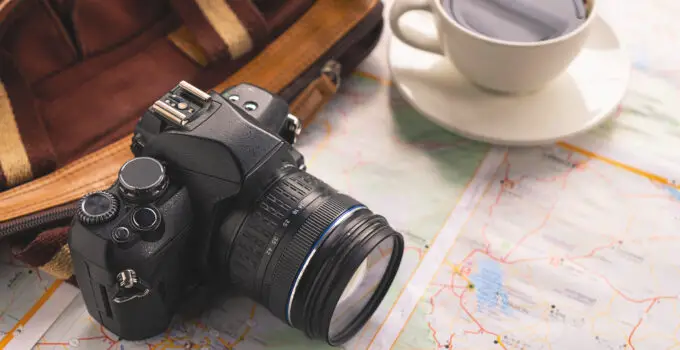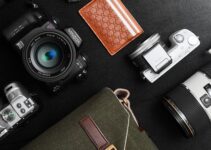Are you tired of worrying about your camera getting damaged due to water? A waterproof camera bag can provide you with the peace of mind you need while capturing your favourite moments.
But how can you ensure that your camera bag is actually waterproof?
In this article, we will address the pain point of finding the right way to waterproof your camera bag.
We have compiled a list of seven effective ways to protect your camera gear from water damage, so you can focus on taking stunning photos without worrying about any mishaps.
From using waterproof covers and sprays to investing in high-quality waterproof camera bags, we will cover everything you need to know to keep your camera safe from water damage.
And to make sure you’re getting the best advice, we’ve consulted with top photography experts to bring you the most valuable and trustworthy information.
So, let’s dive into the world of waterproofing your camera bag and ensure your gear stays safe and dry no matter where your adventures take you!
7 instant steps to waterproof a camera bag
Here are 7 steps to waterproof your camera bag.
- Use a waterproof cover
- Apply a waterproof spray
- Use a dry bag
- Invest in a waterproof camera bag
- Use a rain cover
- Seal your camera bag
- Keep your camera bag off the ground
here are 7 detailed steps to waterproof your camera bag: Take a look now.
1. Use a waterproof cover:
A waterproof cover is a simple yet effective solution to keep your camera bag dry. You can purchase a cover specifically designed for camera bags or use a general-purpose waterproof cover.
These covers are typically made of water-resistant materials such as nylon and polyester and come in a variety of sizes to fit different types of camera bags
2. Apply a waterproof spray:
Another way to waterproof your camera bag is to apply a waterproof spray. These sprays can be used on various materials such as canvas, leather, and nylon.

Simply spray the solution onto your camera bag, let it dry, and you’re good to go. Keep in mind that some sprays may leave a residue or discoloration, so be sure to read the instructions carefully before use.
3. Use a dry bag:
A dry bag is a waterproof bag that can keep your camera gear safe and dry in even the wettest conditions. These bags are typically made of heavy-duty materials and feature a roll-top closure to keep water out.
You can use a dry bag on its own or place your camera bag inside for extra protection.
4. Invest in a waterproof camera bag:
If you’re in the market for a new camera bag, consider investing in a waterproof option. These bags are designed with waterproof materials such as PVC and TPU and feature waterproof zippers and seams to keep your gear dry.
5. Use a rain cover:
A rain cover is a specialized cover designed to protect your camera bag from rain and moisture. These covers are typically made of waterproof materials such as nylon and feature an adjustable strap to fit various sizes of camera bags.
6. Seal your camera bag:
You can also create a waterproof seal around your camera bag using a plastic bag or cling film.
Place your camera bag inside the plastic bag or wrap it in cling film, ensuring that there are no gaps or holes. This will create a waterproof barrier around your camera bag and keep your gear safe from water damage.
7. Keep your camera bag off the ground:
When shooting in wet conditions, it’s important to keep your camera bag off the ground to avoid any water seeping in from below.
Use a camera bag strap to hang your bag from a tree or other sturdy object, or place it on a waterproof mat or towel to keep it elevated and dry.
By following these 7 steps, you can ensure that your camera gear stays dry and protected in even the wettest conditions.
Remember, prevention is key when it comes to water damage, so be sure to take the necessary precautions before heading out on your next photography adventure.

Let’s move to some related faq’s
Related FAQ’s
How to make a waterproof camera bag?
To make a waterproof camera bag, you will need the following materials:
- A large resealable plastic bag or a dry bag
- A thick, durable plastic sheet
- A pair of scissors
- A ruler
- A waterproof zipper
- Waterproof tape or glue
- Velcro strips
Here are the steps to make a waterproof camera bag:
- Cut the plastic sheet to the size of the bag you want to make. You can measure the size of your camera and other equipment, and add a few extra inches for padding and sealing.
- Cut a piece of plastic sheet for the bottom of the bag, and attach it to the main piece using waterproof tape or glue. Make sure to seal the edges well.
- Cut a hole in the plastic sheet for the waterproof zipper. The hole should be slightly smaller than the zipper to ensure a tight fit.
- Attach the waterproof zipper to the plastic sheet using waterproof tape or glue. Make sure to seal the edges well.
- Add Velcro strips to the top of the bag for added security. Make sure the Velcro strips are also waterproof.
- Insert your camera and other equipment into the bag, and seal it shut using the zipper and Velcro strips.
- Test the bag by submerging it in water for a few minutes to ensure that it is fully waterproof.
Note: While this method can provide some level of protection against water, it is important to note that it is not foolproof.
It is always best to use caution and take extra measures to protect your equipment when working in wet conditions.
How do you waterproof a bag?
To waterproof a bag, you can follow these steps:
- Choose a waterproofing method: There are several ways to waterproof a bag, such as using a waterproof spray, wax, or sealant. Choose the method that is best suited for the material of your bag.
- Clean the bag: Before waterproofing, it is important to clean the bag thoroughly to ensure that the waterproofing solution adheres properly. Use mild soap and water to clean the bag, and let it dry completely.
- Apply the waterproofing solution: Depending on the method you have chosen, apply the waterproofing solution evenly on the bag. Make sure to cover all the seams, zippers, and pockets of the bag. Follow the instructions provided by the manufacturer.
- Allow the bag to dry: After applying the waterproofing solution, allow the bag to dry completely. Depending on the type of solution used, this can take anywhere from a few hours to a few days.
- Test the bag: Once the bag is completely dry, test its waterproofing by exposing it to water. If water beads on the surface of the bag and does not seep inside, then your bag is waterproofed.
Note: It is important to note that waterproofing solutions may not be 100% effective and may wear off over time.
It is always best to take extra measures to protect your belongings in wet conditions, such as using a rain cover or a waterproof liner.
How do I protect my camera bag?
To protect your camera bag, you can follow these tips:
- Choose a high-quality camera bag: Invest in a camera bag that is made of durable materials and has ample padding to protect your camera and other equipment.
- Use a rain cover: If you are going to be working in wet conditions, use a rain cover to protect your camera bag from water damage.
- Store the bag properly: When not in use, store your camera bag in a dry and cool place. Avoid storing it in areas where it may be exposed to extreme temperatures or moisture.
- Avoid overloading the bag: Do not overload your camera bag with too much equipment. This can put unnecessary stress on the bag and may cause it to tear or break.
- Use dividers: Use dividers in your camera bag to keep your equipment organized and prevent it from banging against each other during transport.
- Clean the bag regularly: Use a damp cloth to clean your camera bag regularly to prevent dirt and debris from accumulating on it. This can help prevent wear and tear on the bag.
- Be careful when handling the bag: Be careful when handling your camera bag, especially when it contains fragile equipment. Avoid dropping or throwing the bag, and handle it gently.
By following these tips, you can help protect your camera bag and prolong its lifespan.
What is the best way to waterproof backpack?
The best way to waterproof a backpack depends on the material it is made of. Here are some general steps to waterproof a backpack:
- Clean the backpack: Before waterproofing, clean the backpack thoroughly to ensure that the waterproofing solution adheres properly. Use mild soap and water to clean the backpack, and let it dry completely.
- Choose a waterproofing method: There are several ways to waterproof a backpack, such as using a waterproof spray, wax, or sealant. Choose the method that is best suited for the material of your backpack.
- Apply the waterproofing solution: Depending on the method you have chosen, apply the waterproofing solution evenly on the backpack. Make sure to cover all the seams, zippers, and pockets of the backpack. Follow the instructions provided by the manufacturer.
- Allow the backpack to dry: After applying the waterproofing solution, allow the backpack to dry completely. Depending on the type of solution used, this can take anywhere from a few hours to a few days.
- Test the backpack: Once the backpack is completely dry, test its waterproofing by exposing it to water. If water beads on the surface of the backpack and does not seep inside, then your backpack is waterproofed.
Here are some additional tips to help waterproof your backpack:
- Use a rain cover: If you are going to be working in wet conditions, use a rain cover to protect your backpack from water damage.
- Choose a waterproof backpack: Consider investing in a backpack that is already waterproof or water-resistant.
- Use dry bags: Use dry bags to keep your belongings organized and protected from water damage inside your backpack.
- Avoid overloading the backpack: Do not overload your backpack with too much weight or equipment. This can put unnecessary stress on the backpack and may cause it to tear or break.
By following these tips, you can help protect your backpack from water damage and prolong its lifespan.
Conclusion:
In conclusion, waterproofing your camera bag is essential to protect your valuable equipment from water damage. There are several methods to waterproof a camera bag, such as using a waterproof spray, wax, or sealant.
In addition to these methods, you can also use a rain cover, store the bag properly, avoid overloading it, use dividers, clean it regularly, and handle it carefully.
By following these tips, you can prolong the lifespan of your camera bag and ensure that your camera and other equipment remain safe and protected in wet conditions.
Choose the method that works best for your camera bag’s material and make sure to test its effectiveness before exposing it to water.







